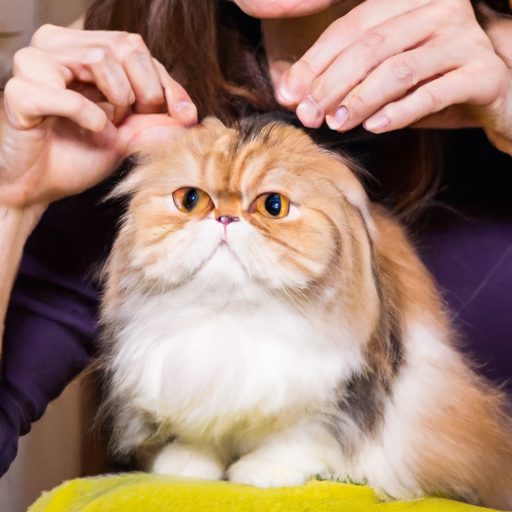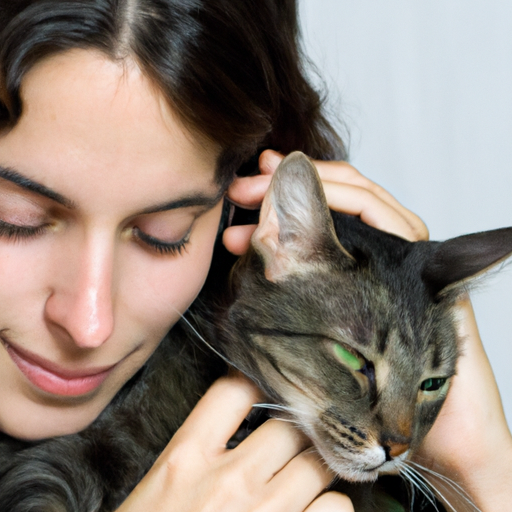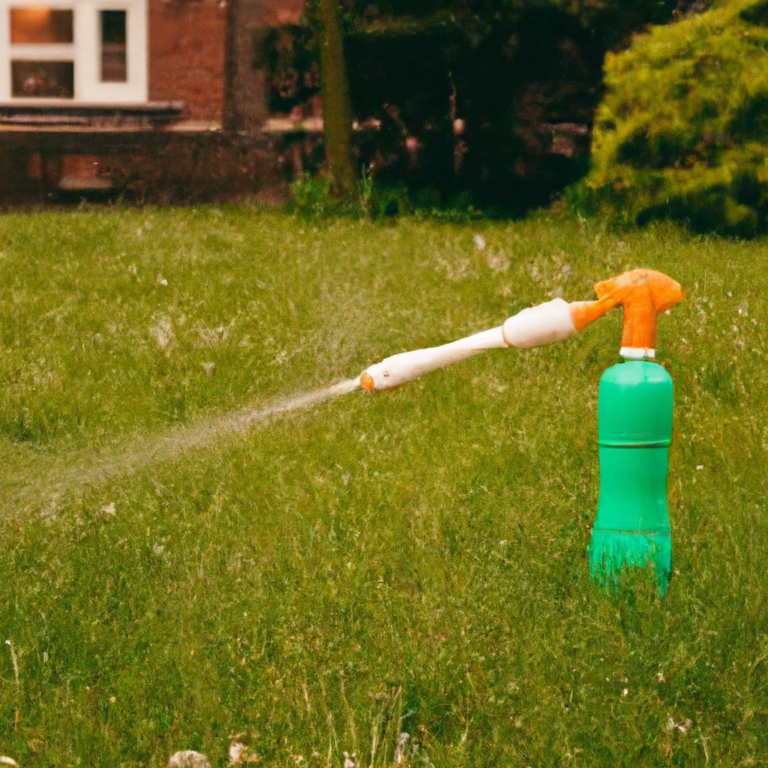How To Clean Cats Ears
When it comes to your furry friends, no detail is too small to overlook, including your cat’s ears. As a pet parent, it’s crucial to maintain their health, which involves regular cleaning of their ears. The good news is that “How To Clean Cats Ears” breaks down several, foolproof methods to get your kitty’s ears cleaned. In this detailed guide, you’re going to find out everything you need to know on how to do just that in a safe, and cat-friendly way. From choosing the right type of ear-cleaning solutions to step-by-step instructions on the cleaning process, this guide covers it all. Maintaining your feline friend’s ears is simpler than you think!

Understanding Why Cat’s Ears Need Cleaning
While your feline companion excels at self-grooming, they may still require your assistance when it comes to the delicate matter of their ears.
Natural self-cleaning capabilities of cats
Cats have a natural ability to clean most parts of their bodies, including their ears. You will often see them licking their paws and swiping at their ears. This is their way of controlling dirt and debris.
Circumstances that require manual cleaning
However, some situations necessitate manual intervention. If you notice a foul odor or discharge, which could be signs of an infection, or if your fluffy friend is scratching their ears excessively or shaking their head, it’s time for you to step in.
Potential health risks of unclean ears
Leaving your cat’s ears dirty can pose several health risks such as ear mites, bacterial or fungal infections, or even hearing loss. This is why it’s essential to stay vigilant for any signs of dirty ears.
Recognizing When Your Cat’s Ears Need Cleaning
Entirely knowing whether or not your cat’s ears need cleaning involves recognizing the signs of healthy and unhealthy ears.
Signs of a healthy cat ear
A healthy cat’s ear should be light pink on the inside, with minimal earwax or debris. It should also be free of strange odors, redness, or inflammation.
Symptoms of ear issues
Conversely, symptoms such as foul odors, discharges, excessive scratching, redness, or swelling could indicate ear issues requiring attention.
Physical and behavioral changes indicating ear problems
Observing for unusual behaviors, such as a loss of balance, excessive head shaking, constant pawing at the ear, or odd eye movements can be signs pointing to possible ear issues.
Types of Cat Ear Problems
Several problems could affect your cat’s ears.
Ear mites in cats
Ear mites are tiny parasites that love the warm, humid environment of your cat’s ears. They cause itching and inflammation and can lead to more severe conditions if not treated.
Fungal infections
Fungal infections are common in cats and can cause a range of symptoms, including itchiness, discomfort, and discharge. A particularly common form of fungal infection in cats is caused by yeast.
Bacterial infections
Bacterial infections can also occur in the ears of cats, often resulting from a buildup of debris or wax that provides an ideal environment for bacteria to grow.
Ear polyps
Ear polyps are fleshy growths that arise from the ear canal’s lining, which can severely affect a cat’s hearing capability. If left untreated, polyps may even lead to facial paralysis or deafness.
Preparing for the Cleaning Process
Cleaning your cat’s ears can be a delicate process, and preparing adequately can help make the process smoother for both you and your cat.
Assembling necessary items
Before starting, equip yourself with the items you need. These usually include cat-safe ear cleaning solution, cotton balls or pads, a syringe or dropper, and treats as rewards.
Choosing the right cat ear cleaning solution
Avoid using solutions with alcohol or hydrogen peroxide as they can irritate your cat’s ears. Choose a high-quality, vet-approved solution for best results.
Comforting your cat before the procedure
Cats are notorious for their dislike of having their ears handled. You could use treats, toys, or soothing words to help calm your feline friend before starting the procedure.

Steps to Clean Your Cat’s Ears
Though it might seem like a challenging task, cleaning your cat’s ears can be done with patience and precision.
Positioning your cat correctly
First, it’s essential to ensure your cat is comfortable and positioned correctly, perhaps on your lap or a soft surface.
Applying the cleaning solution
Next, apply a few drops of your cat-approved cleaning solution into the ear canal using a syringe or dropper. This should loosen any debris inside.
Massaging the base of the ear
Once the solution is applied, massage the base of your cat’s ear to aid the solution in breaking down the earwax or debris.
Wiping away excess debris
Finally, using a cotton ball or pad, gently wipe inside the ear to remove any debris or excess solution.
Understanding the Proper Cleaning Frequency
Determining how often to clean your cat’s ears depends on several factors.
Routine maintenance cleaning
Healthy cats may need their ears cleaned as part of routine hygiene maintenance, typically once a month.
Cleaning frequency when treating an infection
If your cat is being treated for an infection or infestation, you may need to clean their ears more regularly, possibly daily or according to your vet’s instructions.
Factors affecting cleaning frequency
Certain factors may influence how often your cat’s ears need to be cleaned, including their age, breed, lifestyle, and health.
Post-Cleaning Care for Cats
What you do after the cleaning process is as important as the cleaning itself.
Praising and rewarding your cat
Reward your cat with a treat or some petting to positively reinforce the experience.
Monitoring your cat after the cleaning
Monitor your cat for any signs of irritation, discomfort, or a worsening of existing symptoms.
Detecting any signs of discomfort or irritation
If your cat exhibits signs of discomfort or if their symptoms persist despite regular cleanings, it would be best to consult your vet.
Preventing Future Ear Problems
A few preventative measures can help diminish the likelihood of your cat encountering ear problems.
Regular grooming practices
Regular grooming sessions can help you spot any potential issues before they become serious.
Diet and nutrition
Giving your cat a balanced diet can also strengthen their immune system, reducing the risk of infections.
Regular vet check-ups
Routine vet check-ups are indispensable as they can help catch potential problems early on.
Using preventative treatments
Using preventative treatments, such as anti-parasite medications, can also be helpful in preventing future issues.
Addressing Common Fears about Cat Ear Cleaning
Cleaning your cat’s ears can seem daunting, but addressing these fears can help smooth the process.
Debunking myths about cat ear cleaning
For instance, one common myth is that cleaning a cat’s ears could harm their hearing. However, when done correctly, ear cleaning is both safe and beneficial.
Managing cats that resist ear cleaning
Cats that resist cleaning can be challenging. Using positive reinforcement – like treats or rewards – can help them eventually associate ear cleaning with positive outcomes.
Addressing concerns about hurting the cat
The fear of hurting your cat’s ears is a common concern. However, gently handling your cat and following appropriate cleaning methods can mitigate this risk.
What to Do if Cleaning Doesn’t Help
In some cases, despite regular cleaning, some ear problems may persist, and you may need to seek professional help.
When to seek professional help
If your cat’s symptoms continue even after regular cleanings or if their symptoms worsen, it may be time to see the vet.
Understanding possible medical treatments
Your vet may suggest several treatments based on the diagnosis, such as antibiotics for bacterial infections, antifungal medication for yeast infections, or surgical procedures for ear polyps.
The importance of following vet’s instructions
Following your vet’s advice to the letter is critical when it comes to treating your cat’s ear problem, as deviating from this could lead to the condition becoming worse, or getting more complicated to treat.
So, there you have it – a comprehensive guide to understanding why you should clean your cat’s ears, how to do it, and how to detect and handle problems. Stay vigilant, keep your cat’s ears clean, and when in doubt, always seek advice from a vet. Happy grooming!







